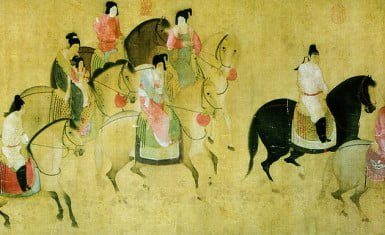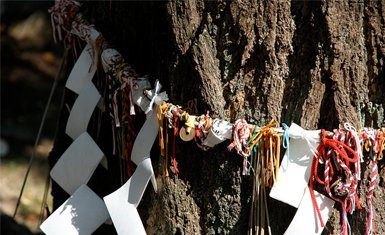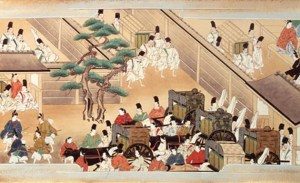Black-clad figures with their faces covered cross the courtyard, climbing the walls like spiders and pacing the rooftops, swift as a cat. A samurai sleeps while one of these figures puts his guards to sleep forever. The bedroom door slides softly, a sword glows in the moonlight and then …
This is the ninja from movies and comics, invisible assassins in black costumes with magical skills in the art of secrecy and death. This ghostly figure is very eye-catching, to tell the truth. But what is the origin of this character?
It is difficult to trace the origin of the first ninja, more properly called shinobi. After all, spies and assassins have always existed throughout the world and throughout history. According to Japanese tradition, the ninjas descended from a demon who was half man, half raven. In reality, the ninja slowly evolved as an opposing force to the upper class of the time, the samurai, in feudal Japan.
Many sources indicate that the skills that were turned in the ninjutsu (the art of stealth) began to develop between the years 600 to 900. It is said that the prince Shotoku hired Otomono Sahito like a shinobi spy.

By 850, the Tang dynasty in China it was beginning to decline. It fell in 907, dragging China into fifty years of chaos. The collapse forced several generals of the dynasty to flee to Japan. These commanders brought with them new tactics and philosophies of warfare.
At the same time Chinese monks also arrived in the 1020, bringing new medicines and philosophies of combat their own. Many of the ideas that had originated in India, and that traveled through Tibet and China, reached Japan. The monks taught their methods to Japanese clergymen (yamabushi) as well as the members of the first clans of ninjas.
For more than a century the mix of Chinese and Japanese tactics defined ninjutsu as a counterculture without rules. Ninjutsu became formalized with Daisuke Togakure Y Kain doshi. Daisuke had been a samurai, but he was weakening in a regional fight, thus losing his samurai title along with his lands. Usually, a samurai would commit seppuku under these circumstances, but Daisuke didn’t.
In 1162, Daisuke met Kain Doshi in the mountains southwest of Honshu. Kain Doshi was a Chinese clergyman. Daisuke gave up the code bushido and together with Doshi he developed a new theory of guerilla warfare called ninjutsu. Daisuke’s descendants created the first ninja school, the Togakure ryu.
Samurai code and ninjutsu
The samurai valued loyalty and honor above all other things. In a battle, the samurai would select a single adversary, announce his challenge, and fight. The samurai wore bold colors on their armor to announce their clan membership. The bushido it dictated that he should be noble and polite.
On the contrary, the ninjutsu It was worth fulfilling a mission, regardless of the means by which it was reached. Sneaky attacks, poisoning, seduction, and espionage were shameful methods for a samurai, but fair by ninja rules.
Who were the ninjas?
Some of the leaders of the ninjas, jonin they were samurai who had lost their honor as Daisuke Togakure. They had lost in battle or had to resign, and fled instead of committing suicide. However, many ninjas did not belong to the nobility. They were villagers Y Farmers that they learned to fight by the means necessary for their survival. The most famous ninja barracks were based in the provinces of Iga Y Kouga.
There were also female ninjas. A female ninja, or kunoichi she entered an enemy castle posing as a dancer, concubine, or servant. They were useful spies, and sometimes they were murderers too.
Use of ninjas by samurai.
The daimyos they could not always be trusted in a pitched battle, but they were limited by the bushido. So on many occasions they hired the ninjas to do the dirty work. They could send them out as spies, to assassinate an enemy, or plant false information, all without tarnishing their reputation.
Clothing, tools and weapons
In popular culture, ninjas are illustrated completely dressed in black, with only their eyes uncovered. However this costume comes from kabuki. The ninjas actually wore navy blue suits to go unnoticed at night. They normally wore a uniform to be inconspicuous among their enemies.
Among the tools and weapons they used are the shinobigatana, a short sword; the bo and the naginata; spades and martial arts like karate. They also wore an outfit known as shuko, a hand crampon used for climbing; and a tessen, a fan of sharp metal.
Ninja decline
The fall of the ninjas occurred in the Sengoku period, when Oda Nobunaga emerged as the daimyo more powerful and that reunited Japan. Nobunaga viewed the ninjas as a threat and launched a swift attack that forced the ninjas to fight in a pitched battle. They were defeated and those who survived fled to nearby provinces or mountains. With the arrival of stability in the Edo Period the need to hire ninjas lessened, their time coming to an end.


